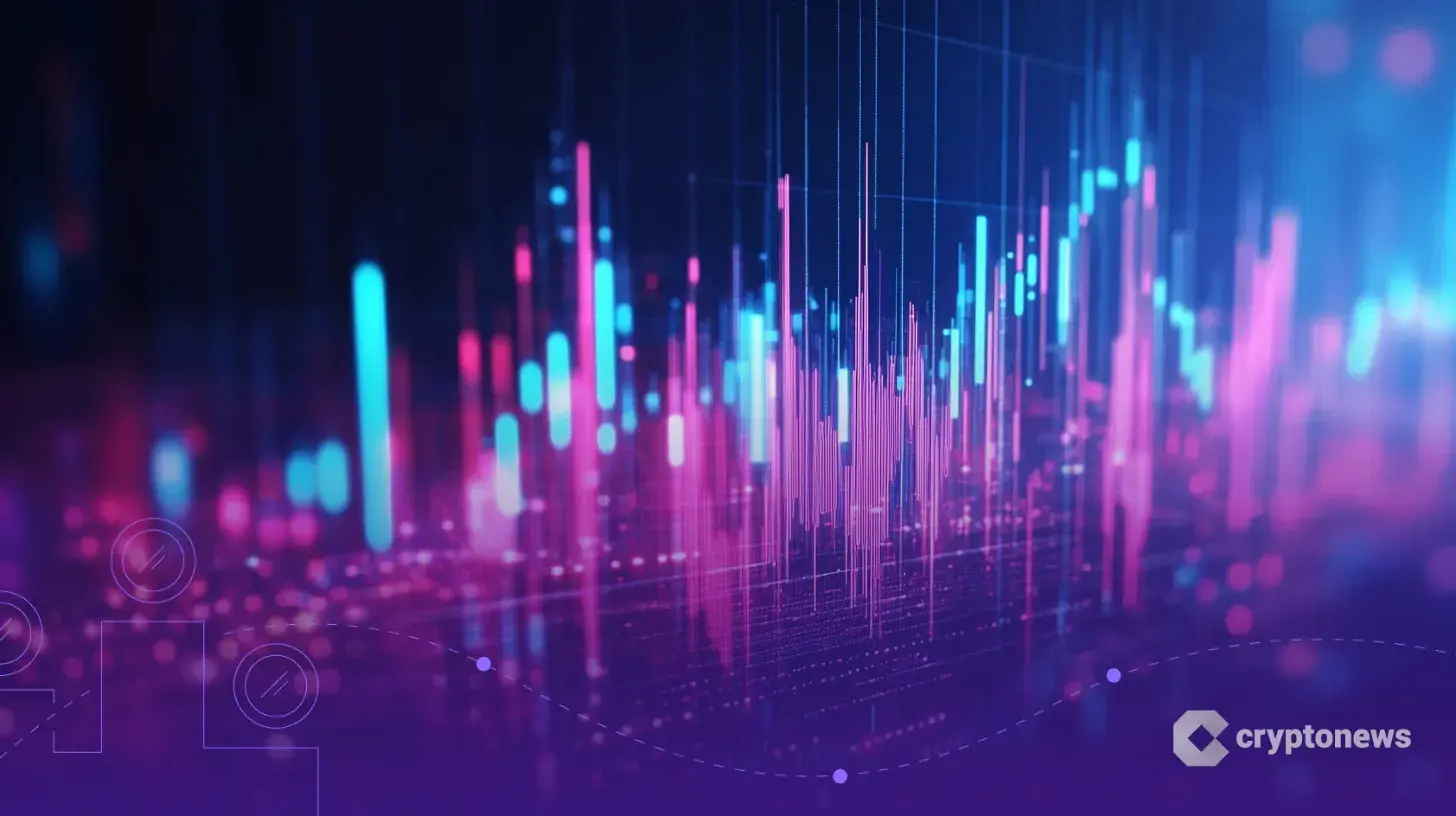US Agency Warns Against Trinity Ransomware Targeting Crypto Victims

US Agency Warns of Trinity Ransomware Targeting Crypto Victims
The U.S. Health Sector Cybersecurity Coordination Center has issued a critical warning regarding the emergence of Trinity ransomware-a highly dangerous new form of cyber threat targeted at such critical sectors as healthcare. The ransomware deploys a double-extortion approach in encrypting victims’ files and stealing sensitive data. While victims are forced to pay in cryptocurrency to avoid data leaks or sales, U.S. authorities are encouraging organizations to harden cybersecurity defenses.
What is Trinity Ransomware?
Trinity ransomware was first detected in May 2024 and is now spreading fast across the wide array of vertical industries. It is particularly dangerous, since for its attack, it has twin motives: first, locking the target victim outside their files by sophisticated encryption, and second, exfiltrating sensitive data which the attackers then threaten to publish or sell, unless paid-usually with some form of cryptocurrency.
This ransomware has already affected several organizations, including at least one U.S. healthcare provider. Because of the sensitiveness of the data, the healthcare sector is particularly vulnerable to such an attack. The perpetrators leverage the urgent need for privacy protection on behalf of patients, along with operational continuity, and bet that an institution will pay the ransom rather than risk exposure or interruption of life-saving services.
How Does Trinity Ransomware Operate?
The Trinity ransomware attacks via several pathways: phishing emails, infected websites, and vulnerabilities in unpatched applications. Upon its successful entry into a system, the malware spreads over the network, gathering crucial data on the system’s infrastructure. Many times, it disguises itself as a normal process, thus getting by standard security tools with minimal or no detection and blocking of this type of attack.
Once it has completely infiltrated the network, Trinity encrypts files, appending the “.trinitylock” extension to compromised files. The encryption algorithm employed by Trinity is ChaCha20, a strong algorithm that renders the files completely unreadable unless or until the correct decryption key is introduced to the files. After this, victims are usually presented with a ransom note in a text or .hta format, while demanding cryptocurrency payments within 24 hours. If the attackers are not paid, they then threaten to leak or sell the pilfered data.
Currently, no tool is known to be available for decrypting Trinity ransomware-locked files, so the options for a victim are very few and unpleasant: pay a ransom or seek costly professional help to recover data.
A Growing Menace of Crypto Ransom Payments
Thus, the pseudonymous nature of cryptocurrency has made it the choice of payment for ransomware groups like Trinity since tracking by law enforcement agencies becomes quite a challenge. In one report by Chainalysis dated 2024, it is suggested that ransomware payments reached $1.1 billion in 2023. With the increasing frequency of ransomware attacks, the cost is increasingly becoming unbearable for victims.
Besides Healthcare, other industries have also fallen victim to Trinity ransomware. Seven organisations, including two healthcare providers in the U.S. and in the U.K., respectively, as of early October 2024 have reported having been affected. In particular, healthcare institutions store sensitive patient data and thus are always considered prime targets. The perpetrators know very well that these organizations often give in to huge ransom demands in order not to compromise patient confidentiality and all its subsequent legal and financial consequences.
Conclusion
Trinity ransomware is a flag of the growing menace that cybercriminals tend to pounce on the weaknesses of an organization handling sensitive data. Their use of cryptocurrency as one of the big forms of payment makes the attempts to halt these attacks more complex because the rate at which the hackers can do their thing is almost unpunishable. The government of the United States calls on various organizations, especially those that deal in healthcare, to take active measures in boosting their cybersecurity defenses amid the increasing menace of ransomware attacks.
Read More

Prediction Markets Pour Over $4 Million Volume Into Trump-Musk Feud – Odds Hint at Trump Impeachment Risk
US Agency Warns Against Trinity Ransomware Targeting Crypto Victims

US Agency Warns of Trinity Ransomware Targeting Crypto Victims
The U.S. Health Sector Cybersecurity Coordination Center has issued a critical warning regarding the emergence of Trinity ransomware-a highly dangerous new form of cyber threat targeted at such critical sectors as healthcare. The ransomware deploys a double-extortion approach in encrypting victims’ files and stealing sensitive data. While victims are forced to pay in cryptocurrency to avoid data leaks or sales, U.S. authorities are encouraging organizations to harden cybersecurity defenses.
What is Trinity Ransomware?
Trinity ransomware was first detected in May 2024 and is now spreading fast across the wide array of vertical industries. It is particularly dangerous, since for its attack, it has twin motives: first, locking the target victim outside their files by sophisticated encryption, and second, exfiltrating sensitive data which the attackers then threaten to publish or sell, unless paid-usually with some form of cryptocurrency.
This ransomware has already affected several organizations, including at least one U.S. healthcare provider. Because of the sensitiveness of the data, the healthcare sector is particularly vulnerable to such an attack. The perpetrators leverage the urgent need for privacy protection on behalf of patients, along with operational continuity, and bet that an institution will pay the ransom rather than risk exposure or interruption of life-saving services.
How Does Trinity Ransomware Operate?
The Trinity ransomware attacks via several pathways: phishing emails, infected websites, and vulnerabilities in unpatched applications. Upon its successful entry into a system, the malware spreads over the network, gathering crucial data on the system’s infrastructure. Many times, it disguises itself as a normal process, thus getting by standard security tools with minimal or no detection and blocking of this type of attack.
Once it has completely infiltrated the network, Trinity encrypts files, appending the “.trinitylock” extension to compromised files. The encryption algorithm employed by Trinity is ChaCha20, a strong algorithm that renders the files completely unreadable unless or until the correct decryption key is introduced to the files. After this, victims are usually presented with a ransom note in a text or .hta format, while demanding cryptocurrency payments within 24 hours. If the attackers are not paid, they then threaten to leak or sell the pilfered data.
Currently, no tool is known to be available for decrypting Trinity ransomware-locked files, so the options for a victim are very few and unpleasant: pay a ransom or seek costly professional help to recover data.
A Growing Menace of Crypto Ransom Payments
Thus, the pseudonymous nature of cryptocurrency has made it the choice of payment for ransomware groups like Trinity since tracking by law enforcement agencies becomes quite a challenge. In one report by Chainalysis dated 2024, it is suggested that ransomware payments reached $1.1 billion in 2023. With the increasing frequency of ransomware attacks, the cost is increasingly becoming unbearable for victims.
Besides Healthcare, other industries have also fallen victim to Trinity ransomware. Seven organisations, including two healthcare providers in the U.S. and in the U.K., respectively, as of early October 2024 have reported having been affected. In particular, healthcare institutions store sensitive patient data and thus are always considered prime targets. The perpetrators know very well that these organizations often give in to huge ransom demands in order not to compromise patient confidentiality and all its subsequent legal and financial consequences.
Conclusion
Trinity ransomware is a flag of the growing menace that cybercriminals tend to pounce on the weaknesses of an organization handling sensitive data. Their use of cryptocurrency as one of the big forms of payment makes the attempts to halt these attacks more complex because the rate at which the hackers can do their thing is almost unpunishable. The government of the United States calls on various organizations, especially those that deal in healthcare, to take active measures in boosting their cybersecurity defenses amid the increasing menace of ransomware attacks.
Read More

